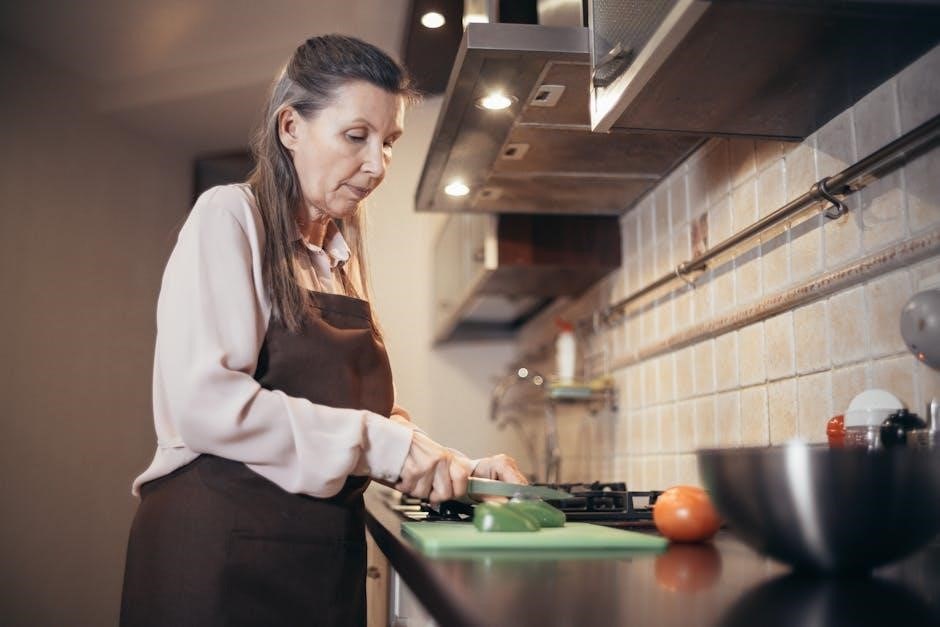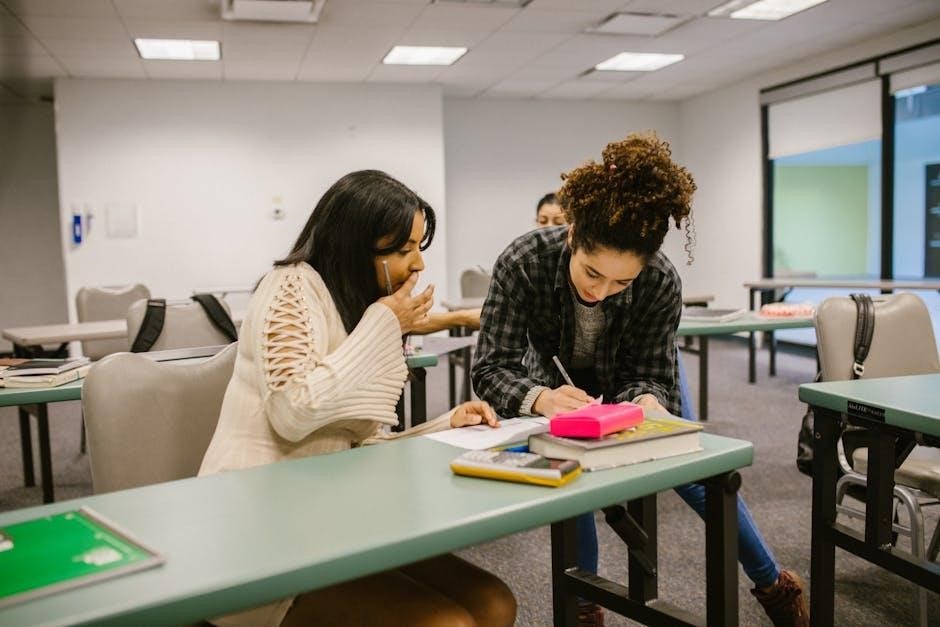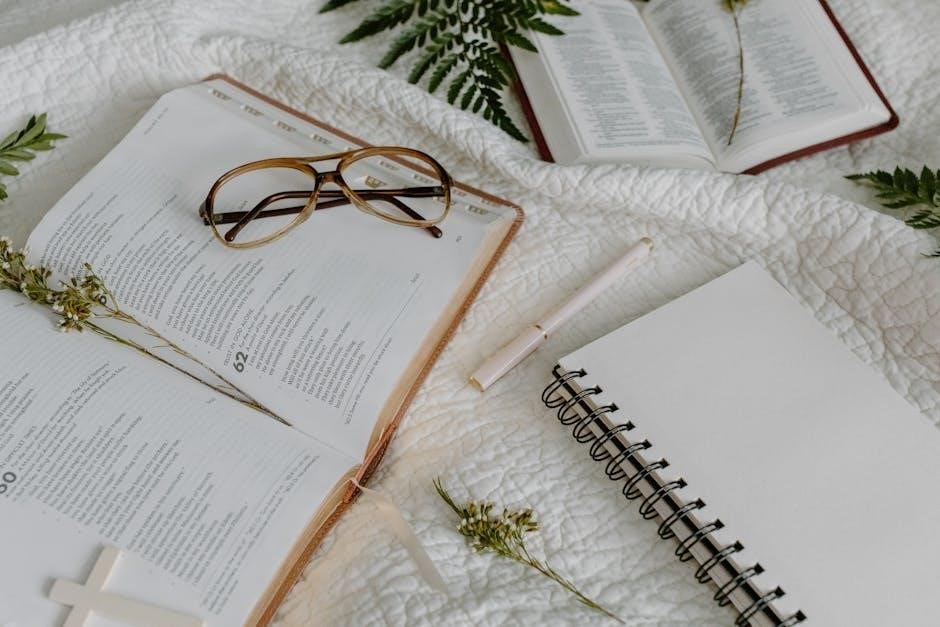Gentle yoga combines soft movements, deep breathing, and relaxation, perfect for all levels. A 60-minute sequence offers a balanced practice, improving circulation, flexibility, and mental calm, ideal for those seeking serene well-being.
What is Gentle Yoga?
Gentle yoga is a slow-paced, therapeutic practice emphasizing relaxation, breath awareness, and soft movements. It combines seated postures, stretching, and breathing techniques to promote physical and mental well-being. Unlike dynamic styles, gentle yoga focuses on holding poses for extended periods, often with props, to enhance flexibility and reduce stress. Ideal for beginners, seniors, or those with limited mobility, it fosters a calming and meditative experience. A 60-minute sequence typically includes seated warm-ups, Cat-Cow stretches, and restorative poses, creating a balanced practice that nurtures the body and mind. This approach encourages mindfulness and deep relaxation, making it accessible to everyone seeking a serene yoga experience.
Benefits of Gentle Yoga
Gentle yoga offers numerous benefits, including enhanced flexibility, improved circulation, and reduced muscle tension. It promotes deep relaxation, lowers stress levels, and improves overall well-being. The slow, mindful movements help increase body awareness and balance. Regular practice can enhance respiratory health through focused breathing techniques, strengthen the immune system, and improve sleep quality. Additionally, gentle yoga supports mental clarity and emotional stability, fostering a sense of inner peace. It is particularly beneficial for those recovering from injuries or managing chronic pain, as it provides a safe and nurturing environment for healing. A 60-minute sequence ensures a comprehensive practice, addressing both physical and mental needs effectively.
Who Can Practice Gentle Yoga?
Gentle yoga is accessible to everyone, regardless of age, fitness level, or prior experience. It is ideal for beginners, as it introduces foundational poses and breathing techniques in a slow-paced manner. Pregnant women, individuals with chronic pain, or those recovering from injuries can benefit from the modified and supportive nature of the practice. Seniors and people with mobility challenges also find gentle yoga beneficial, as it emphasizes flexibility and relaxation without strain. Even experienced practitioners can use gentle yoga as a restorative practice to rejuvenate and balance their bodies and minds. The adaptability of gentle yoga makes it a universal practice suitable for all individuals seeking a mindful and therapeutic experience.
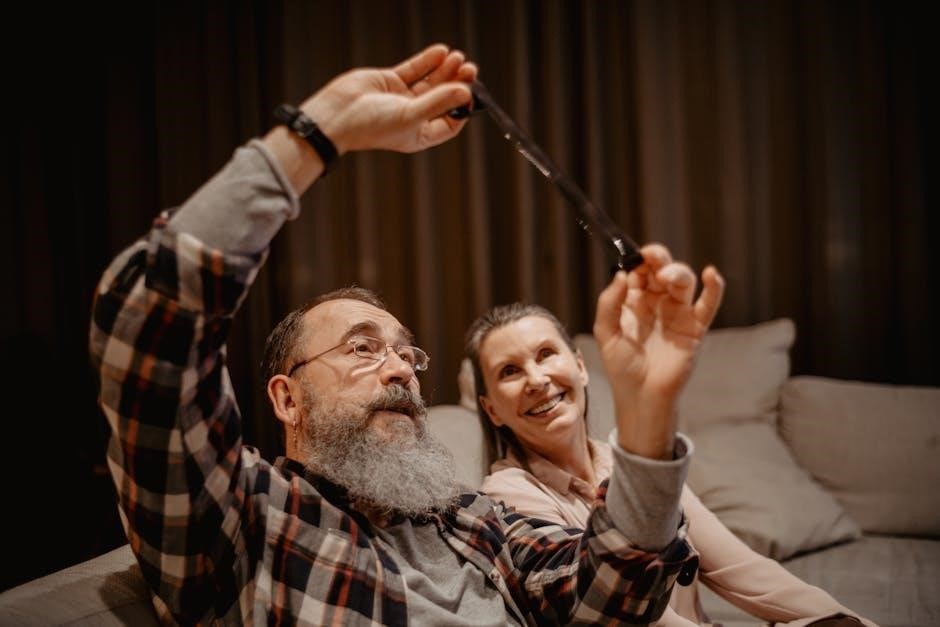
Understanding the 60-Minute Sequence
A 60-minute gentle yoga sequence is thoughtfully designed to balance warm-ups, stretches, twists, and relaxation, ensuring a comprehensive practice that nurtures both body and mind.
Structure of a 60-Minute Gentle Yoga Class
A 60-minute gentle yoga class is divided into segments: warm-up (10 minutes), seated poses (15 minutes), tabletop exercises (15 minutes), standing sequences (10 minutes), twists and balances (10 minutes), inversions and backbends (5 minutes), forward folds and cool down (5 minutes), and meditation (10 minutes). Each section flows smoothly into the next, ensuring a balanced practice that soothes the mind, improves circulation, and enhances flexibility. The structure allows for gradual progression, catering to all levels, and ends with deep relaxation to rejuvenate the body and spirit.
Why 60 Minutes is Ideal for a Comprehensive Practice
A 60-minute gentle yoga session provides ample time to explore various aspects of the practice, ensuring a holistic experience. It allows for a gradual warm-up, followed by a balanced flow of seated, standing, and restorative poses. This duration supports proper alignment, breathing techniques, and relaxation, making it suitable for all levels. The extended time enables deep stretching, improved circulation, and enhanced flexibility while fostering mental calm and emotional balance. It also accommodates meditation and final relaxation, essential for rejuvenation. A 60-minute class offers a complete practice, ensuring students leave feeling refreshed and centered, with a sense of overall well-being.
How to Prepare for a 60-Minute Yoga Session
Preparing for a 60-minute gentle yoga session involves a few simple steps to ensure a comfortable and effective practice. Arrive early to set up your space, wear loose, breathable clothing, and bring a mat, water, and any necessary props like blocks or blankets. Hydrate lightly before class to avoid discomfort during poses. Eat a light meal or snack at least 1-2 hours beforehand to maintain energy levels. Create a quiet, distraction-free environment if practicing at home. Familiarize yourself with the sequence beforehand using a PDF guide, and mentally prepare to focus on your breath and movements. Proper preparation enhances your experience, allowing you to fully immerse in the practice.
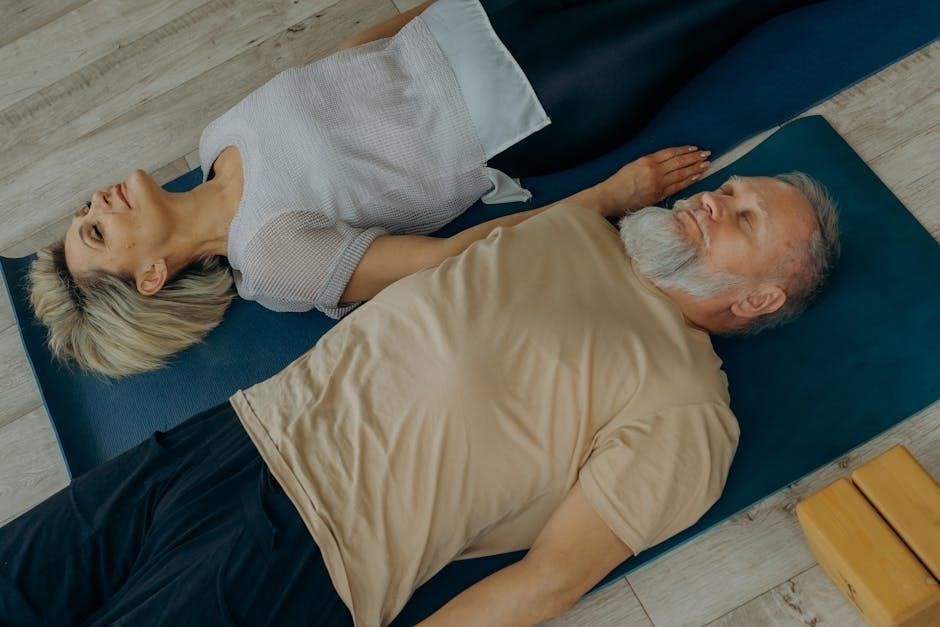
Warm-Up and Breathing Techniques
Gentle yoga begins with a soothing warm-up, blending soft stretches and breathing exercises to prepare the body and calm the mind, fostering relaxation and focus.
Seated Pranayama for Relaxation
Seated Pranayama is a foundational practice in gentle yoga, designed to calm the mind and center the breath. Begin by sitting comfortably with legs crossed or feet planted firmly on the ground. Close your eyes and bring awareness to your breath. Practice gentle inhales and exhales, focusing on the sensation of air moving in and out of the body. Techniques like Nadi Shodhana (alternate nostril breathing) or Bhramari (bee breath) can deepen relaxation. This practice typically lasts 5-10 minutes, allowing the nervous system to unwind and prepare for the physical sequence. Regular Seated Pranayama enhances focus, reduces stress, and creates a meditative state, setting the tone for a rejuvenating 60-minute gentle yoga practice.
Neck and Shoulder Warm-Up Exercises
Neck and shoulder warm-ups are essential in gentle yoga to release tension and improve flexibility. Begin by sitting comfortably with eyes closed, focusing on breath. Gently roll shoulders forward and backward, repeating several times. Slowly tilt head side to side, bringing ear toward shoulder, and hold for a few breaths. Perform chin tucks by looking downward, stretching the back of the neck. Use arm circles and side stretches to loosen tight muscles. These exercises are slow, deliberate, and grounding, preparing the body for deeper movements. Props like a strap or pillow can enhance comfort. This sequence lasts about 10 minutes, fostering relaxation and reducing stiffness in the upper body, setting the tone for a balanced practice.
gentle Cat-Cow Stretch for Spinal Mobility
The gentle Cat-Cow stretch is a foundational movement in yoga, designed to enhance spinal flexibility and warm up the entire back. Begin on hands and knees, ensuring wrists are under shoulders and knees are under hips. Inhale as you arch the back, lifting the head and tailbone (Cow Pose). Exhale as you round the spine, tucking the chin and pelvis (Cat Pose). Repeat this flow slowly, synchronizing breath with movement. This exercise strengthens back muscles, improves posture, and relieves tension. Use a bolster or cushion for knee comfort if needed. Practice for 5-7 rounds, focusing on smooth transitions and deep breathing. This sequence is ideal for preparing the spine for deeper stretches and maintaining mobility in a gentle, accessible way.
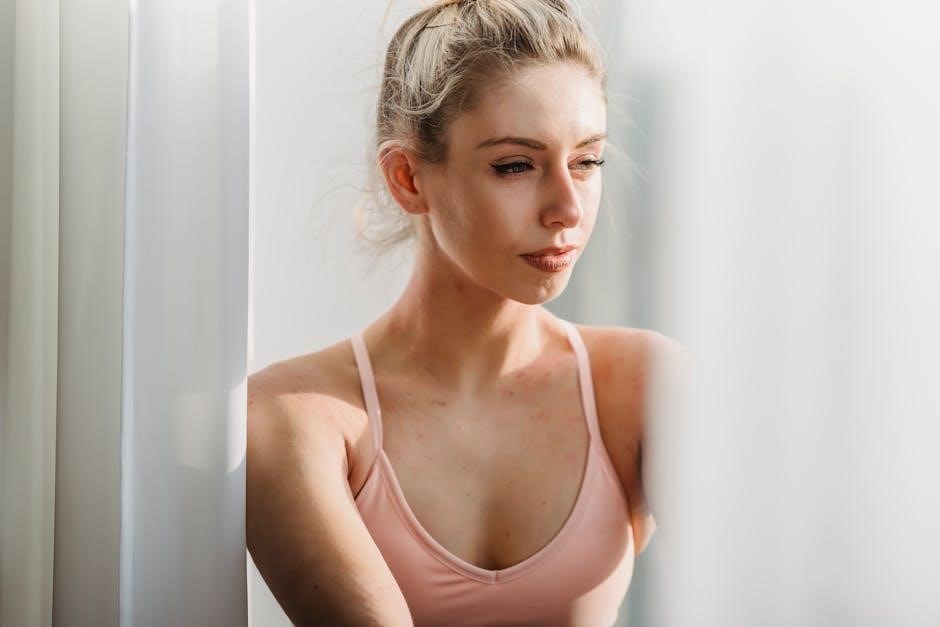
Seated and Tabletop Sequences
Seated and tabletop poses promote flexibility, alignment, and core engagement. These sequences include gentle stretches, forward folds, and twists, designed to enhance spinal mobility and inner calm.
Seated Forward Fold (Paschimottanasana)
Seated Forward Fold, or Paschimottanasana, is a foundational pose that stretches the hamstrings, spine, and entire back body. It promotes flexibility and relaxation, calming the nervous system. To practice gently, sit with legs extended, inhale to lengthen the spine, and exhale to fold forward, reaching for your toes or shins. Use a blanket or strap for support if needed. Hold for 3-5 breaths, deepening the stretch with each exhale. This pose is ideal for releasing tension and preparing the body for deeper relaxation. It’s often included in the 60-minute sequence to transition into cooler, more restorative postures, enhancing overall balance and well-being.
Tabletop Sequence for Core Engagement
The Tabletop Sequence is a series of poses performed on hands and knees, focusing on core strength and spinal mobility. Begin with Cat-Cow to warm up the spine, transitioning into a gentle Plank variation to engage the abdominals. From Tabletop, lift one knee toward your chest, then extend it behind you, maintaining balance. Repeat on the other side. These movements strengthen the transverse abdominis and improve posture. Modifications, such as using blocks or reducing the range of motion, make this sequence accessible for all levels. This segment is designed to build stability and awareness, preparing the body for more dynamic poses in the 60-minute gentle yoga flow.
Seated Spinal Twist (Bharadvajasana)
The Seated Spinal Twist is a gentle pose that enhances spinal flexibility and promotes detoxification. Sit comfortably with legs crossed or extended, then place your right hand on the outside of your left knee. Inhale to lengthen the spine, exhale to twist gently, gazing over your shoulder. Hold for 3-5 breaths, then repeat on the other side. This pose improves posture, reduces tension, and energizes the body. Use a block under your hand for support if needed. The twist stimulates digestion and calms the nervous system, making it a perfect addition to the 60-minute sequence for overall well-being and relaxation.
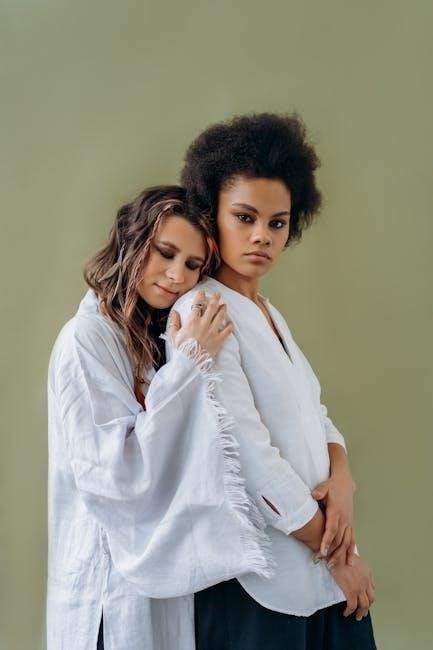
Standing Sequences
Standing sequences in gentle yoga focus on balance, strength, and alignment. Mountain Pose and Gentle Warrior Flow are key, promoting stability and relaxation in a 60-minute practice.
Mountain Pose (Tadasana) and Its Variations
Mountain Pose, or Tadasana, is a foundational standing posture that establishes good alignment and balance. It involves standing tall with feet hip-width apart, arms by the sides, and palms facing forward. Engage the core, lengthen the spine, and distribute weight evenly on both feet. This pose promotes grounding and awareness, serving as a starting point for many flows. Variations include raising the arms overhead for added stretch or shifting weight slightly for balance practice. Tadasana improves posture, strengthens the legs, and enhances breath awareness. It’s a simple yet powerful pose that sets the tone for a balanced and mindful 60-minute gentle yoga sequence, suitable for all levels of practice.
gentle Warrior Flow (Virabhadrasana I & II)
The gentle Warrior Flow combines Virabhadrasana I and II, offering a harmonious blend of strength, flexibility, and balance. In Virabhadrasana I, step one foot forward, bend the front knee, and stretch arms upward, opening the chest. Virabhadrasana II involves a wide stance, bending the front knee, and extending arms horizontally, engaging the hips and shoulders. These poses are modified to suit gentle practice, focusing on controlled movements and deep breathing. They promote hip opening, spinal alignment, and mental focus. Modifications, such as using blocks or reducing the depth of the knee bend, ensure accessibility for all levels. This flow builds confidence, improves circulation, and enhances overall well-being, making it a cornerstone of the 60-minute sequence.
Standing Forward Fold (Uttanasana)
Standing Forward Fold, or Uttanasana, is a foundational pose that gently stretches the hamstrings, calves, and spine while promoting relaxation. To practice gently, start with feet hip-width apart, engage the quadriceps, and hinge forward from the hips. Let the arms dangle or hold opposite elbows, allowing the head and neck to release. Modify by bending the knees slightly to reduce tension. This pose improves circulation, relieves tension in the lower back, and prepares the body for deeper stretches. Breathing deeply, hold for 3-5 breaths, focusing on surrender and release. It’s an excellent transition pose, fostering mindfulness and connection to the body’s natural flow in the 60-minute sequence.
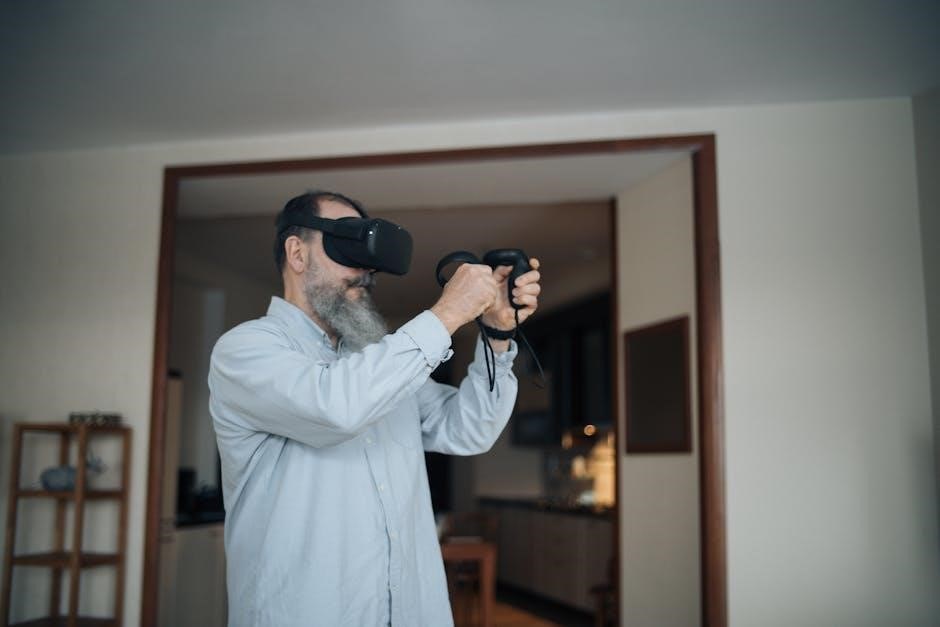
Twists and Balances
Twists and balances promote detoxification, stability, and focus. Gentle seated and standing twists enhance spinal mobility, while poses like Tree and Eagle improve equilibrium, grounding the mind and body.
Seated and Standing Twists for Detoxification
Seated and standing twists are essential in gentle yoga for promoting detoxification and improving spinal mobility. These poses stimulate the internal organs, enhancing digestion and circulation. Seated twists like Bharadvajasana and Ardha Matsyendrasana gently compress and release the abdominal area, aiding in the removal of toxins. Standing twists, such as Revolved Triangle Pose (Parivrtta Trikonasana), add balance and stability while deepening the detoxifying effects. These twists also open the chest, improving breathing and energy flow. Modifications are available for all levels, ensuring accessibility. By incorporating these poses, practitioners experience a sense of lightness and renewal, both physically and mentally, making them a cornerstone of a 60-minute gentle yoga sequence.
Tree Pose (Vrksasana) for Balance
Tree Pose, or Vrksasana, is a foundational standing balance pose that cultivates stability and focus. It is often included in gentle yoga sequences to ground the body and calm the mind. To practice, stand on one leg, with the other foot resting against the inner thigh. Engage the core, lengthen the spine, and extend the arms overhead or place the hands on the hips. Gaze forward to a steady point for balance. This pose strengthens the ankles and improves posture while promoting mental clarity. Modifications, such as using a wall for support, make it accessible for all levels. Regular practice enhances overall equilibrium and confidence, making it a valuable addition to a 60-minute gentle yoga routine.
Eagle Pose (Garudasana) for Stability
Eagle Pose, or Garudasana, is a standing balance pose that enhances stability, focus, and hip flexibility. It is a great addition to a 60-minute gentle yoga sequence, as it strengthens the legs and improves coordination. To practice, stand tall, bend the knees slightly, and wrap one leg around the other, intertwining the thighs. Extend the arms forward, wrap them around, and press the palms together. Keep the chest lifted and gaze steady. This pose helps release tension in the shoulders and hips while fostering balance and concentration. Modifications, such as keeping the toes on the ground, make it accessible for all practitioners, ensuring a safe and beneficial experience for everyone.
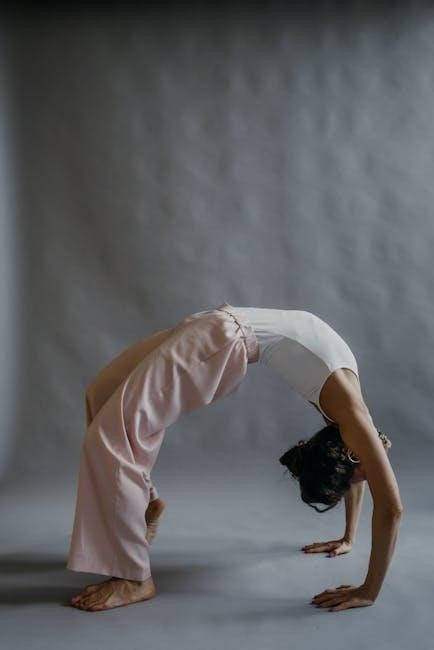
Inversions and Backbends
Inversions and backbends gently enhance flexibility, strength, and spinal mobility. Poses like Supported Shoulder Stand and Bridge Pose promote relaxation and openness, while maintaining a calming, meditative flow.
gentle Downward-Facing Dog (Adho Mukha Svanasana)
Gentle Downward-Facing Dog (Adho Mukha Svanasana) is a foundational pose adapted for relaxation and accessibility. Start on all fours, then lift hips upward, keeping elbows slightly bent. Use a block under hands for support if needed. This pose stretches hamstrings, calves, and spine while strengthening arms and shoulders. Breathe deeply, focusing on the stretch and release. Hold for 5-8 breaths, allowing the body to relax into the pose. Modifications, such as bending knees or shortening the stance, ensure comfort and prevent strain. This inversion promotes circulation and calmness, making it a perfect addition to a gentle yoga sequence.
Bridge Pose (Setu Bandha Sarvangasana)
Bridge Pose (Setu Bandha Sarvangasana) is a gentle backbend that strengthens the back muscles and opens the chest. Lie on your back, knees bent, and feet flat on the mat. Inhale as you lift hips, squeezing shoulder blades together. Use a block under the sacrum for support if needed. This pose improves spinal flexibility and relieves tension in the lower back. Hold for 3-5 breaths, feeling the opening in your chest and the grounding of your feet. Exhale to slowly lower down, maintaining control. Ideal for a 60-minute sequence, Bridge Pose balances energy and promotes relaxation, making it a soothing addition to your practice.
Supported Shoulder Stand (Viparita Karani)
Supported Shoulder Stand (Viparita Karani) is a restorative inverted pose that promotes relaxation and balance. Place a block or folded blanket under your pelvis for support. Lie on your back, lift your legs overhead, and rest your pelvis on the prop. Extend your arms alongside your body, palms down, and relax your shoulders. This pose gently stretches the neck, improves circulation, and calms the nervous system. Hold for 5-10 breaths, allowing your body to surrender. It’s ideal for grounding energy and preparing for deep relaxation. A perfect addition to a 60-minute gentle yoga sequence, this pose offers therapeutic benefits while being accessible to all levels of practitioners.
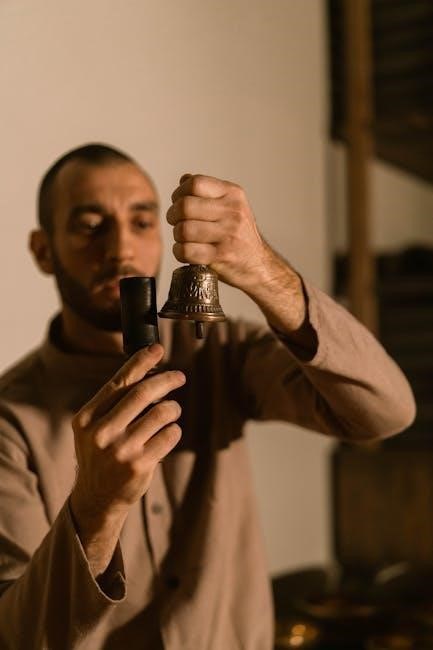
Forward Folds and Cool Down
This section focuses on gentle stretches and relaxation, transitioning from active poses to calming postures. Use props to deepen stretches and release tension, preparing for final relaxation.
Seated Forward Fold with Props
Seated Forward Fold with Props is a restorative pose that enhances relaxation and flexibility; Use a bolster or pillow under the chest for support, allowing the spine to release gently. A strap can assist in deepening the stretch if needed. Sit comfortably with legs extended, inhale to lengthen the spine, and exhale to fold forward. Let the head and arms relax, holding the pose for 5-10 breaths. This pose calms the nervous system, stretches the hamstrings, and promotes a meditative state. It’s ideal for cooling down, as it reduces tension and prepares the body for final relaxation or Savasana. Proper alignment and breath awareness are key.
Child’s Pose (Balasana) for Relaxation
Child’s Pose, or Balasana, is a nurturing and restorative pose that promotes deep relaxation and rejuvenation. Kneel on the mat with knees wide apart and toes touching. Stretch the arms forward, lower the forehead to the ground, and breathe deeply. This pose gently stretches the spine, hips, and back muscles while calming the nervous system. It’s an excellent cool-down pose, allowing the body to release tension and prepare for final relaxation. Hold for 5-10 breaths, focusing on the rise and fall of the chest. Use a bolster under the chest for added comfort. Balasana is a peaceful way to transition into Savasana or conclude the practice, leaving you feeling grounded and serene.
Legs-Up-The-Wall Pose (Viparita Karani)
Legs-Up-The-Wall Pose, or Viparita Karani, is a restorative and deeply rejuvenating posture. Sit close to a wall, then lie back and swing your legs up so they rest against it. Let your body relax completely, with arms by your sides and palms facing up. This pose promotes blood flow toward the upper body, calming the nervous system and reducing swelling in the feet and legs. It’s ideal for relaxation and preparation for meditation or Savasana. Stay for 5-10 minutes, breathing deeply, allowing your body to surrender and recharge. Use a cushion under the hips for added comfort. This pose is a serene way to unwind and restore energy, leaving you refreshed and centered.
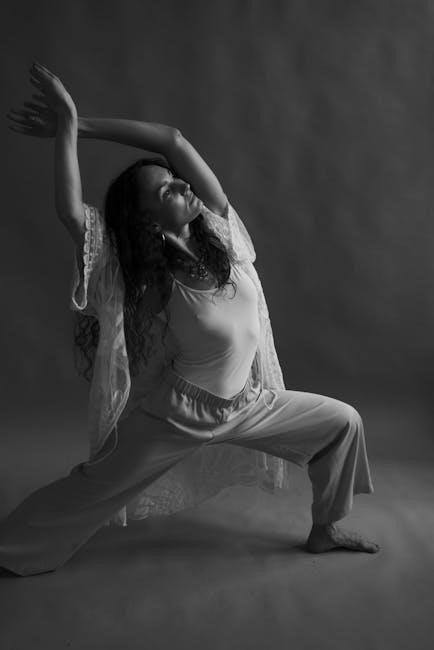
Meditation and Final Relaxation
Meditation and final relaxation in gentle yoga promote mental calmness and physical recovery. Use props like bolsters or blankets to support your body during these serene practices.
Guided Meditation for Deep Relaxation
A guided meditation in a gentle yoga sequence helps practitioners unwind deeply. Techniques like visualization, breath awareness, or body scanning are used to quiet the mind and rejuvenate the body. This practice, often lasting 5-10 minutes, encourages mindfulness and inner peace. Props like pillows or blankets can enhance comfort, allowing for a more immersive experience. The calm environment and soothing instructions guide students to release tension and embrace stillness, preparing them for Savasana or concluding their practice on a tranquil note. Regular guided meditation can improve sleep quality, reduce stress, and foster emotional balance, making it a cornerstone of holistic well-being.
Savasana (Corpse Pose) for Final Relaxation
Savasana, or Corpse Pose, is a restorative pose that concludes the gentle yoga sequence, promoting deep relaxation and rejuvenation. Lying on your back with arms and legs relaxed, eyes closed, and breath steady, this pose helps reduce stress and tension. It allows the body to absorb the benefits of the practice while calming the mind. Typically held for 5-10 minutes, Savasana is enhanced with props like blankets or bolsters for comfort. This pose transitions smoothly into seated meditation or seals the practice, leaving practitioners refreshed and centered, with a sense of gratitude and inner peace.
Sealing the Practice with Gratitude
Concluding the gentle yoga sequence with gratitude cultivates mindfulness and positivity. Sitting comfortably, hands in Anjali Mudra, take a moment to reflect on the practice. Acknowledge the body’s efforts and the mind’s calmness. Express silent thanks for health, breath, and the opportunity to nurture oneself. This closure strengthens the connection to self and the world, fostering a sense of completion. A gentle bow or Namaste seals the practice, embodying respect and grace. This moment of gratitude transitions smoothly into daily life, leaving participants refreshed and centered, with a renewed sense of purpose and harmony.
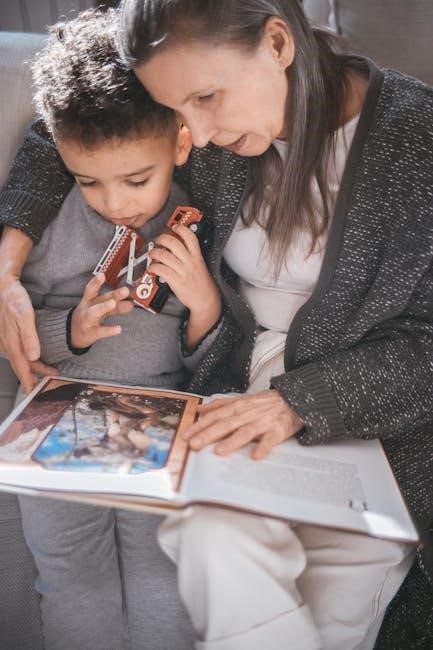
Additional Resources
Access the 60-minute gentle yoga sequence PDF for a comprehensive guide. Perfect for home practice or teaching, this resource includes detailed poses, breathing techniques, and modifications for all levels.
How to Download the 60-Minute Gentle Yoga Sequence PDF
To download the 60-minute gentle yoga sequence PDF, visit trusted yoga resources or websites like Tummee.com. Look for the “Download” option, often free, and save the PDF. This guide includes detailed poses, breathing techniques, and modifications, perfect for home practice or teaching. Ensure the source is reputable for quality content. The PDF is ideal for creating structured classes, focusing on relaxation and flexibility. It’s suitable for all levels, offering a holistic practice to improve circulation, reduce stress, and enhance well-being. Download now and start your gentle yoga journey with ease.
Using the PDF for Home Practice
The 60-minute gentle yoga sequence PDF is a valuable tool for home practice. It provides a clear, structured guide with detailed instructions and illustrations, allowing you to follow along effortlessly. Begin by creating a quiet, comfortable space. Follow the sequence step-by-step, starting with warm-ups and progressing through seated and standing poses, twists, and final relaxation. Use the PDF to set a timer for each pose and maintain proper alignment. Modify postures as needed for personal comfort. The PDF ensures consistency and progression, helping you stay focused and mindful. Regular practice enhances flexibility, reduces stress, and promotes overall well-being from the convenience of your home.
Sharing the Sequence with Students
Sharing the 60-minute gentle yoga sequence PDF with students is an excellent way to enhance their practice. The PDF serves as a comprehensive guide, allowing students to follow along at home or in class. Teachers can distribute it as a resource for students to deepen their understanding and consistency. The structured format helps students stay on track, ensuring they progress smoothly through each pose. It also provides visual cues and timing, making it easier for students to practice independently. Sharing the sequence fosters a sense of community and continuity, as everyone follows the same routine. This tool is particularly useful for new students or those who prefer a gentle, therapeutic approach to yoga.
